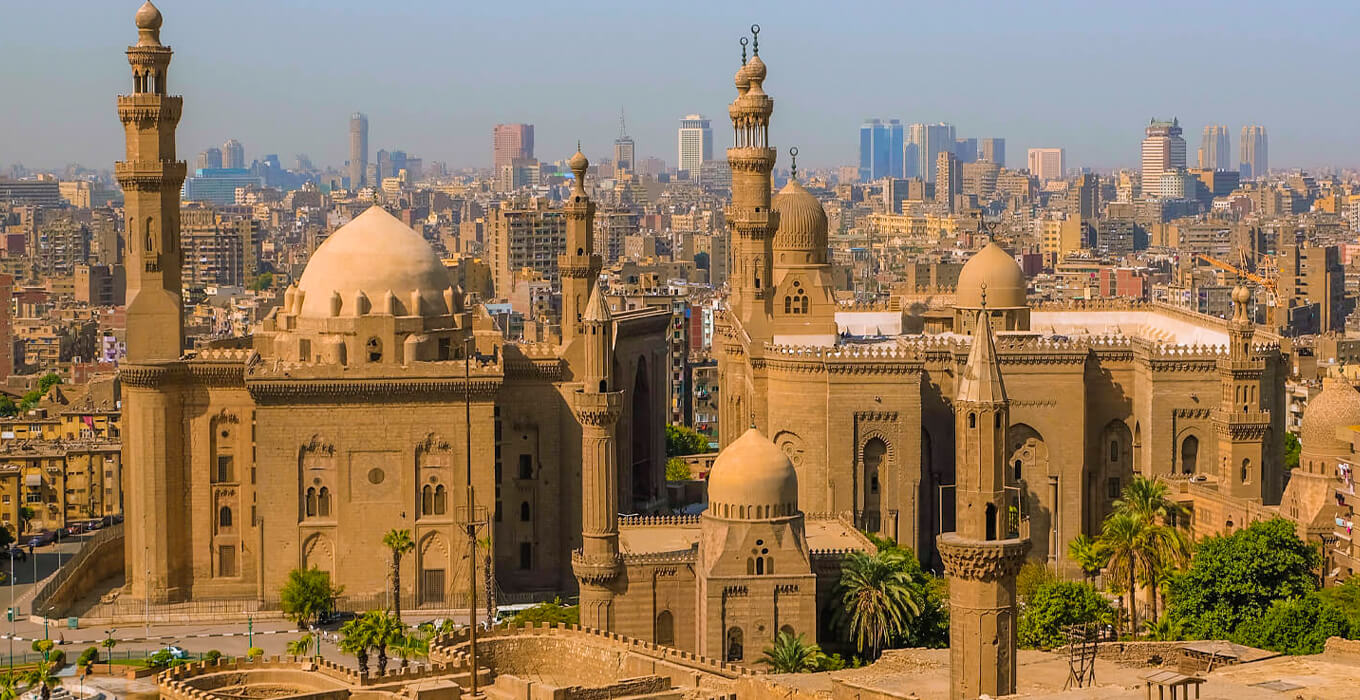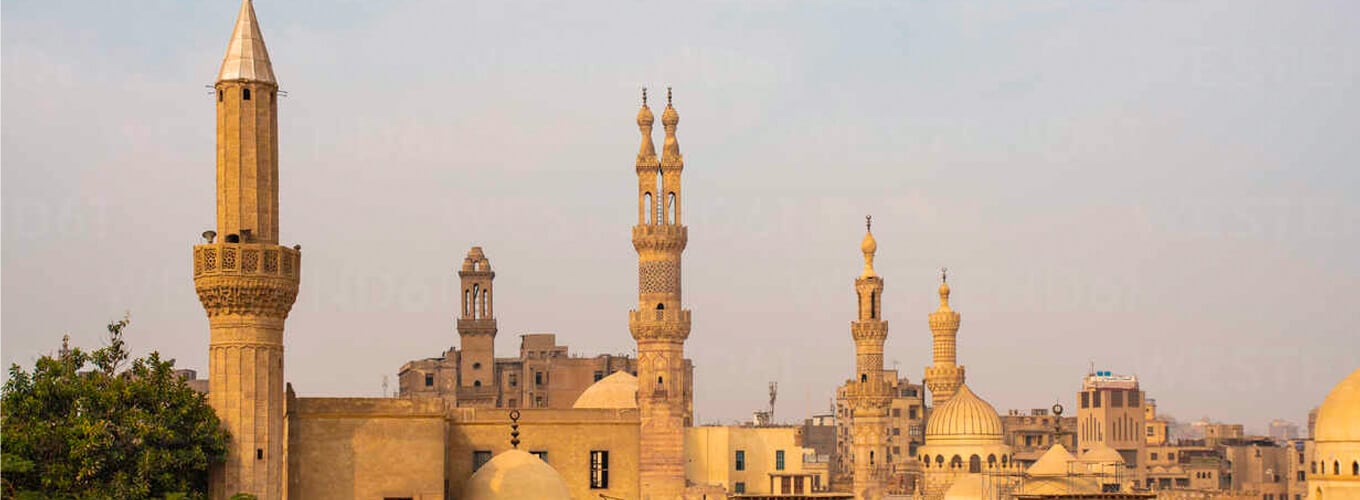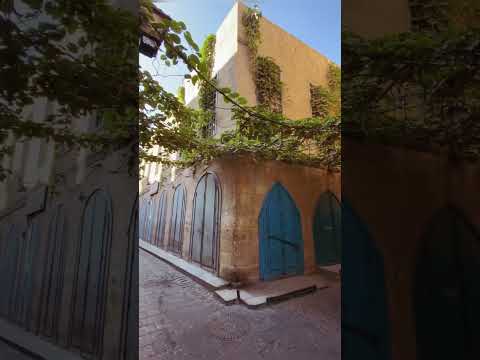Imagine stepping back in time, where the air smells of spices and prayers fill the streets. This is Islamic Cairo, a place full of history in Egypt’s capital. It’s a district that shows off Egypt’s rich culture for centuries.
What secrets are hidden in its narrow streets and big mosques? How has this place stayed strong over time? As you walk through Islamic Cairo, you’ll find stories everywhere. These stories tell of a city full of life and history.
Key Takeaways
- Islamic Cairo goes back to the 10th century. It was made by the Fatimid dynasty as a center of Islamic culture and learning.
- The area is full of Islamic architecture. You’ll see famous mosques, madrasas, and fortresses.
- The Al-Azhar Mosque, started in 969 AD, is one of the oldest universities still open today.
- Places like the Mosque of Ibn Tulun and the Khan el-Khalili bazaar show the city’s lively past.
- In 1979, Islamic Cairo was named a UNESCO World Cultural Heritage site. It’s known for its well-preserved medieval Islamic architecture and city layout.
The Timeless Allure of Islamic Cairo
Islamic Cairo is known as “Medieval Cairo.” It’s a place full of the city’s rich Islamic history. The area shows off architecture from the Fatimid, Ayyubid, Mamluk, and Ottoman times. It feels like stepping back in time.
A Journey Through Time and Heritage
Walking through Islamic Cairo is a treat for the senses. You’ll smell exotic scents, see bright colors, and hear the sounds of everyday life. The mix of different architectural styles and the lasting impact of ancient Islamic dynasties will capture your heart.
The Magic of Wandering Through Ancient Alleys
As you walk through the narrow streets, you’ll feel the history of past Islamic empires around you. You’ll see buildings from the Fatimid, Ayyubid, Mamluk, and Ottoman times. Each corner brings something new to see, like beautiful Architectural Styles and the lasting impact of Islamic Dynasties.
“Wandering through Islamic Cairo is like stepping back in time, where the sights, sounds, and scents of the past mingle with the rhythms of modern life.”
Islamic Cairo has a special charm. It takes you back to another time. You can feel the history and the spirit of the Medieval and Fatimid eras all around you.
Architectural Wonders of Islamic Cairo
Islamic Cairo is famous for its stunning mosques. Each one shows a unique style that marks the impact of different Islamic dynasties. This area’s rich history proves the lasting effect of Mosque Architecture and Mamluk Architecture on the city.
Mosques: Artistic Masterpieces of Islamic Architecture
The Sultan Hassan Mosque and Madrasa is a top site in Islamic Cairo. It’s one of the biggest mosques globally. Built in the 14th century, it shows off Mamluk architecture with detailed carvings, tall minarets, and a big central courtyard.
The Al-Azhar Mosque started in the 10th century by the Fatimid Caliphate. It’s now one of the oldest universities and a key place for Islamic Learning.
Madrasas: Centers of Islamic Learning and Culture
Islamic Cairo also has many madrasas, or Islamic schools. These were key for learning and culture back then. They have fancy facades and detailed courtyards. These places were crucial for sharing Islamic Knowledge in the area.
The buildings of Islamic Cairo show the area’s deep culture and the lasting impact of Mosque Architecture and Mamluk Architecture. From the tall minarets of the Al-Azhar Mosque to the big halls of the Sultan Hassan Madrasa, these spots amaze visitors and scholars. They give a peek into the art and knowledge of the Islamic world.
Iconic Landmarks in the Heart of Islamic Cairo
The Saladin Citadel stands tall in Islamic Cairo. It was named after the famous Muslim leader Salah ad-Din al-Ayyubi (Saladin). This fortress was the government’s seat for over 700 years. Now, it’s a historic site with museums and mosques, like the Mosque of Muhammad Ali, known for its alabaster.
The Saladin Citadel: A Towering Fortress of History
The Saladin Citadel has been a key part of Islamic Cairo’s skyline for ages. It shows the area’s deep history and architecture. Named after Saladin, it was the power center for over 700 years, hosting government and royal homes. Now, it’s a museum complex, showing history through artifacts and beautiful mosques like the Mosque of Muhammad Ali.
Al-Azhar Mosque and University: A Beacon of Islamic Knowledge
The Al-Azhar Mosque was started by the Fatimid Caliphate. It’s now one of the oldest universities and a top place for Islamic studies. Its design, with courtyards, minarets, and prayer halls, shows the growth of Islamic architecture over time. It’s a key spot for those wanting to dive into the area’s culture and learning.
“Cairo gained the title of the ‘city of minarets’ due to its numerous mosques, which have become iconic landmarks in the heart of Islamic Cairo.”
The Al-Azhar Mosque and Al-Azhar University are key in keeping and sharing Islamic knowledge. They draw students and scholars globally, shining as a center of learning and spirituality.
Islamic Cairo
Islamic Cairo shows over a thousand years of history. It was shaped by the Fatimids, Ayyubids, Mamluks, and Ottomans. Each era added its own style to the area’s look.
Unveiling the Legacy of Ancient Islamic Dynasties
The Fatimid dynasty came from Tunisia and took over Egypt in 969. They made al-Qahira (Cairo) their capital. They started the Mosque of al-Azhar in 972, which became a famous university.
Later, the Ayyubid and Mamluk periods added their own styles to the city. The Citadel of Cairo was built from 1176–1183 during the Ayyubid time. The Mamluks added beautiful details to mosques and madrasas.
The Ottoman Empire took over Egypt in the 16th century. They brought Turkish and Islamic styles to the city. This added more beautiful mosques and buildings to the skyline.
A Melting Pot of Diverse Architectural Styles
At first glance, Islamic Cairo might seem to have one look. But a closer look shows the unique styles of each era. Al-Muizz Street has many medieval buildings, showing the city’s long history.
The Mosque of Ibn Tulun is an example of Abbasid architecture. Mamluk-era mosques and madrasas have intricate details. Islamic Cairo is a mix of Islamic architectural innovation and art.
“Islamic Cairo is a living museum, where the ghosts of the past whisper their stories through the streets, mosques, and monuments that have stood the test of time.”

Khan El Khalili: A Vibrant Bazaar Experience
No trip to Islamic Cairo is complete without seeing the Khan El Khalili. It’s one of the oldest and most famous markets in the Middle East. This historic marketplace is a feast for the senses. You’ll find shops with spices, textiles, jewelry, and traditional crafts.
Khan El Khalili is huge, covering more than 5,000 square meters. It’s the biggest bazaar in modern Africa and welcomes about 3,000 visitors every day. Bargaining with vendors is a big part of the fun. It lets you feel the lively energy and timeless charm of this Middle Eastern bazaar.
There’s a lot to see, from the historic Cafe El-Fishawy, opened in 1797, to special areas for gold, copper, and spices. You can find antiques, silverware, gold pieces, stained-glass lamps, incense, accessories, carpets, and more.
| Statistic | Value |
| Area of Khan El Khalili | Over 5,000 square meters |
| Daily Visitors | Approximately 3,000 |
| Founding Year | 1382 |
| Expansion Year | 1511 |
The Khan El Khalili has been featured in many books, like Naguib Mahfouz’s works and Rosie Thomas’ “Iris and Ruby.” It’s in the heart of Islamic Cairo and has lasted through the ages. It shows off the rich culture of the area.
Preserving Islamic Cairo’s Heritage
Islamic Cairo is full of amazing architecture and culture. It faces both challenges and chances for saving its history. This area has many monuments, mosques, madrasas, and old buildings. They need care to keep their unique look and story.
Restoration Efforts and Cultural Preservation Initiatives
Many groups, local and international, have helped restore Islamic Cairo’s landmarks. They work to keep the area’s special look and value its culture.
- The Saladin Citadel was the government seat for over 700 years. Now, it has museums and mosques, like the Mosque of Muhammad Ali.
- The Sultan Hassan Mosque and Madrasa is one of the biggest mosques in the world. It’s known for its size and Mamluk style.
- The Al-Azhar Mosque is one of the oldest universities in the world. It was started by the Fatimid Caliphate and is key to Islamic studies.
- The Bayt al-Suhaymi shows what life was like in wealthy families back then. It’s a traditional Arab house with Ottoman architecture.
Groups also work hard to keep Islamic Cairo’s culture alive. The Al-Darb Al-Ahmar Monuments Project has looked at over 9,000 ceramic tiles. They’ve recorded their designs and where they came from.
| Project | Focus | Outcomes |
| Al-Darb Al-Ahmar Monuments Project | Documentation and study of ceramic tiles |
|
| Responsive Preservation Initiative (RPI) | Urgent preservation, documentation, and site management for cultural heritage sites |
|
These efforts are key to keeping Islamic Cairo’s rich heritage safe for the future.
Exploring Islamic Cairo on Foot
Walking through Islamic Cairo’s historic lanes is an amazing way to dive into its rich culture. This area, known as the “City of a Thousand Minarets,” has over 537 historical sites. It shows the city’s long history and lively culture.
Navigating the Labyrinth of Historic Lanes
Walking through Islamic Cairo can be fun but also a bit tricky. The streets are crowded and full of life. To make the most of your visit, plan your route, bring enough money, and respect local customs, especially at religious places.
Tips for a Memorable Walking Tour Experience
- Use a guidebook like “Islamic Monuments in Cairo: The Practical Guide” by Caroline Williams to learn more about the area.
- Follow a planned path, like from the Madrasa of Sultan Hassan to the Bab Zuweila gate, to see important sites.
- Be ready to take in the sights, sounds, and smells of this lively area fully.
With the right attitude and a sense of adventure, exploring Islamic Cairo by foot can be very rewarding. It’s a chance to see the city’s history, culture, and spirituality up close.

Embracing the Sights, Sounds, and Scents
Exploring Islamic Cairo is an amazing journey for all your senses. As you walk through the narrow streets, you’ll see stunning sights. You’ll see tall minarets and detailed architecture everywhere you look.
The air is filled with the smells of spices, incense, and tea. This makes the experience even more special.
The vibrant atmosphere of Islamic Cairo is alive with sounds. You’ll hear the sounds of daily life, vendors talking, and the call to prayer from the muezzin. These sounds make you feel connected to the area’s rich cultural heritage.
“Cairo is known as the ‘City of a Thousand Minarets,’ and as you wander through its winding alleys, you’ll understand why. The towering minarets and intricate architecture create a truly mesmerizing experience for the senses.”
The Khan El Khalili Bazaar is full of sights, sounds, and smells. It’s a place where you can really take in the sensory experiences. You might smell fresh tea, see beautiful textiles, or hear the muezzin’s call to prayer. Islamic Cairo is full of things that will leave a lasting impression on you.
Islamic Cairo: A Tapestry of History and Spirituality
Islamic Cairo is more than a historic area; it’s a living piece of Egypt’s cultural heritage, Islamic spirituality, and architectural legacy. Every narrow street, tall minaret, and busy market has a story. They tell of history, religion, and culture, drawing in visitors.
Big mosques like the Al-Azhar Mosque are centers of Islamic learning and prayer. They attract scholars and those seeking spirituality. These buildings show the skill and art of past Islamic dynasties, like the Fatimids, Mamluks, and Ottomans.
“Exploring Islamic Cairo is a profound journey through time, offering visitors a unique opportunity to immerse themselves in the rich traditions and spiritual essence that have shaped the city for over a millennium.”
The Saladin Citadel, a huge fortress, was home to Egypt’s leaders. It shows the area’s complex history and the people’s strength. The Museum of Islamic Arts has many textiles, ceramics, metalwork, and manuscripts. It gives a peek into the diverse cultural achievements of the Islamic world.
Walking through Islamic Cairo’s historic streets takes you back in time. The sights, sounds, and smells of the past mix with today’s life. This area truly shows Egypt’s cultural heritage, Islamic spirituality, and architectural legacy over the centuries.
Conclusion
Islamic Cairo is a place where old meets new, showing Egypt’s deep Islamic roots. It has the Saladin Citadel and the busy Khan El Khalili market. These spots give visitors a full experience of history, architecture, and culture.
This area is special for its spiritual feel, amazing buildings, and lively vibe. It makes a big impact on everyone who visits. It’s a mix of history and tradition that invites you to learn more about its stories and importance.
Walking through Islamic Cairo takes you back in time. You see the culture that has made Egypt what it is today. The big mosques and detailed madrasas show the skill of Islamic architects and scholars.
Read our related articles:

